B-2 Spirit Joined By B-29 Superfortress For Unprecedented Nuclear Bomber Heritage Flight
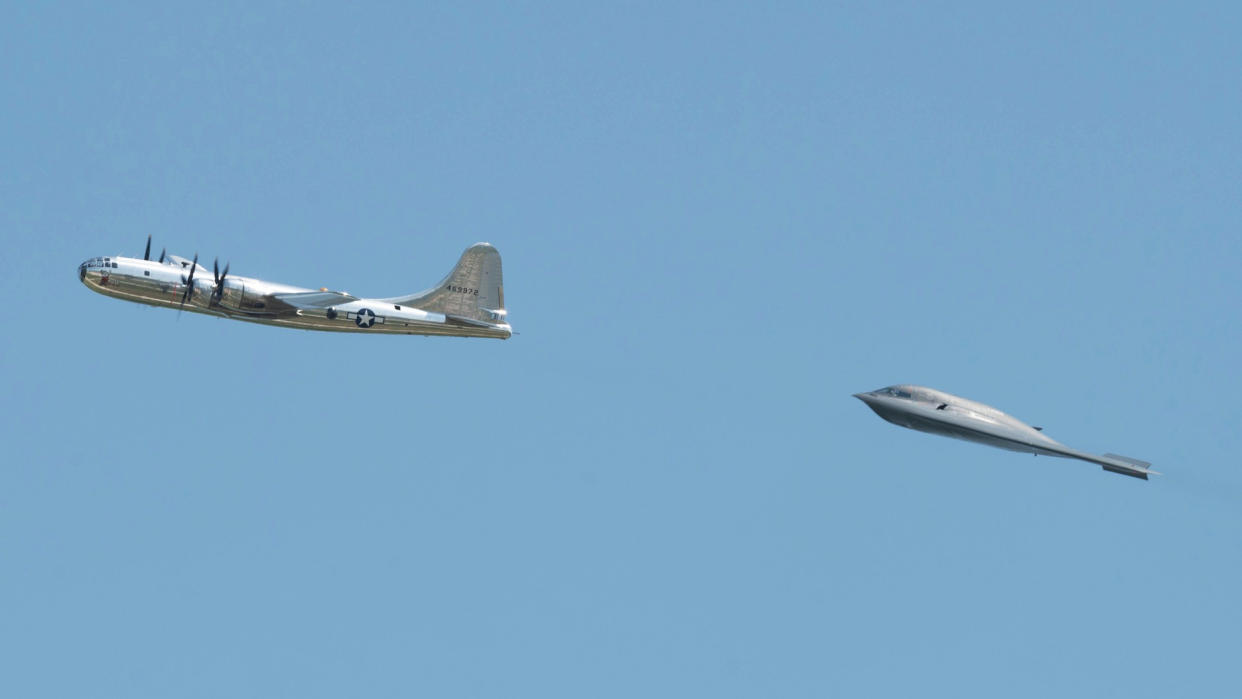
Two historic U.S. nuclear bombers, their first flights separated by almost half a century, took to the skies together over Missouri at the weekend. The formation flights by the U.S. Air Force B-2 Spirit stealth bomber and the B-29 Doc — one of only two examples of the World War II-era bomber that are flying — were the first time that these two legendary aircraft had flown together in this manner, the service states.
The formation flights recognized a key link in the heritage of the types, namely the 509th Bomb Wing that today operates the B-2, but which was originally established in World War II to fly nuclear missions with the B-29.
B-29 & B-2 flying in formation during Wings Over Whiteman! pic.twitter.com/0KNe3lxpdo
— Matthew Smith (@MatthewKCWX) July 13, 2024
The event in question was the Wings Over Whiteman Air Show at Whiteman Air Force Base on July 13 and 14. However, it seems that having the B-2 and B-29 meet up in the air on both days of the show may have been something of an impromptu event, or at least an unannounced surprise decision. The B-29 had been listed in advance as a static airshow performer. Meanwhile, photographer Kaden m, who shared his shot of the flypast with TWZ, explained that the formation flight had not been revealed to the spectators in advance.
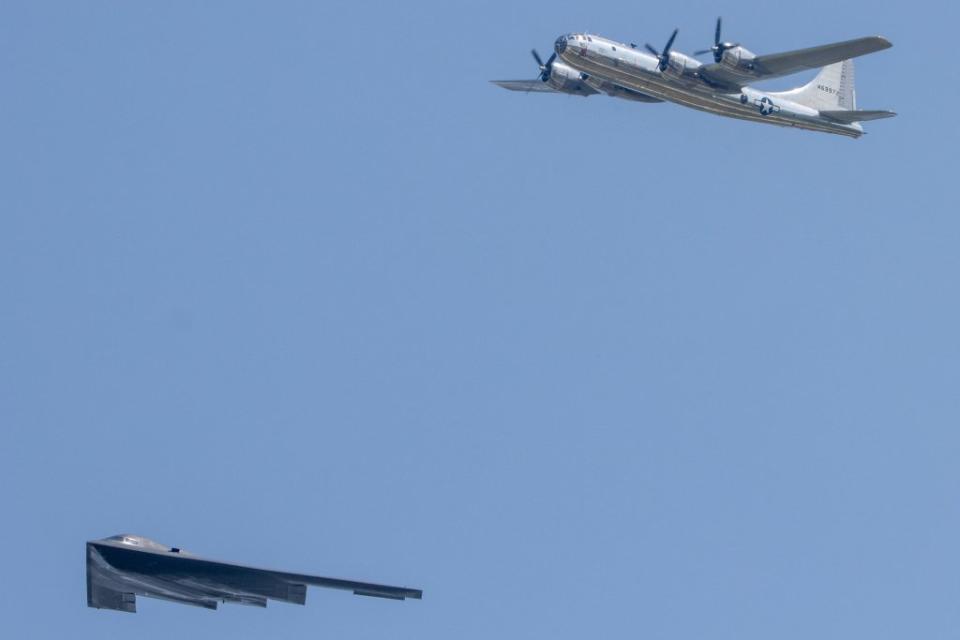
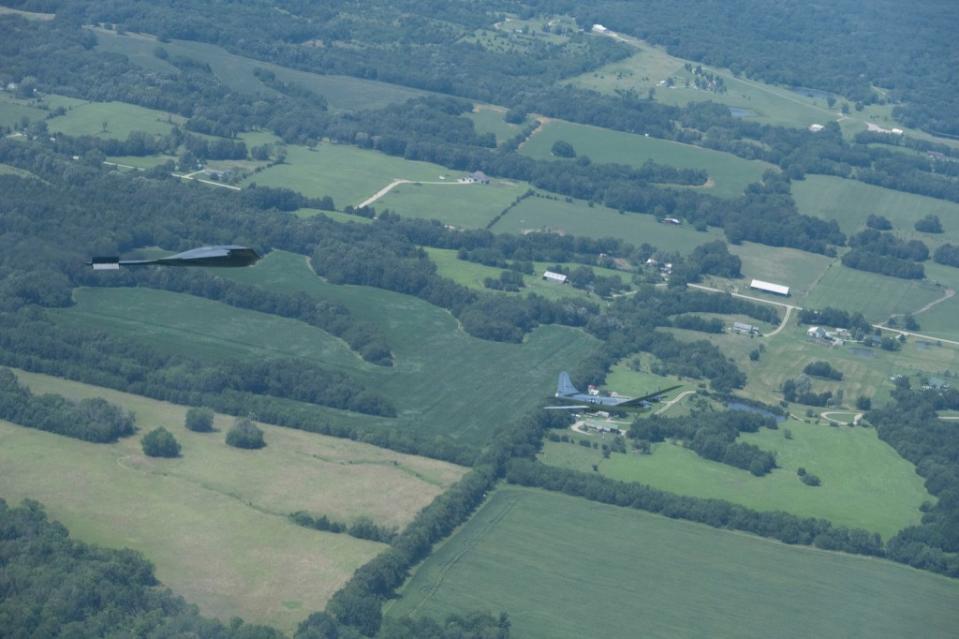
The resident 509th Bomb Wing told TWZ that they “believe it is probably the first time the B-2 and B-29 have flown in formation together during an airshow,” and that the formation “was flown mainly because of the opportunity of having both aircraft available.”
B-29 in formation with the B-2 Spirit Bomber.
#aviationdaily#aviation#planespottingpic.twitter.com/bKhZxnsk4H
— Matthew Smith (@MatthewKCWX) July 14, 2024
On Sunday, my son and I were able to watch a B-2 and B-29 fly together. Was a sight to see! pic.twitter.com/7q9JtaY1D5
— Katie Hubbard (@Khubbard991) July 15, 2024
By itself, a B-2 taking part in Wings Over Whiteman was to be expected. The air base, in Knob Noster, Missouri, is the only permanent residence of operational Spirits. Whiteman is home to the ‘silver bullet’ B-2 fleet, which counts 19 of the bombers (a 20th is being divested from the Air Force after it made an emergency landing and suffered a fire at the base on December 10, 2022.)
Northrop (which merged to form Northrop Grumman in 1994) built a total of just 21 B-2s at Plant 42 starting in the late 1980s. Another B-2 was lost in a crash at Andersen Air Force Base on Guam in 2008.
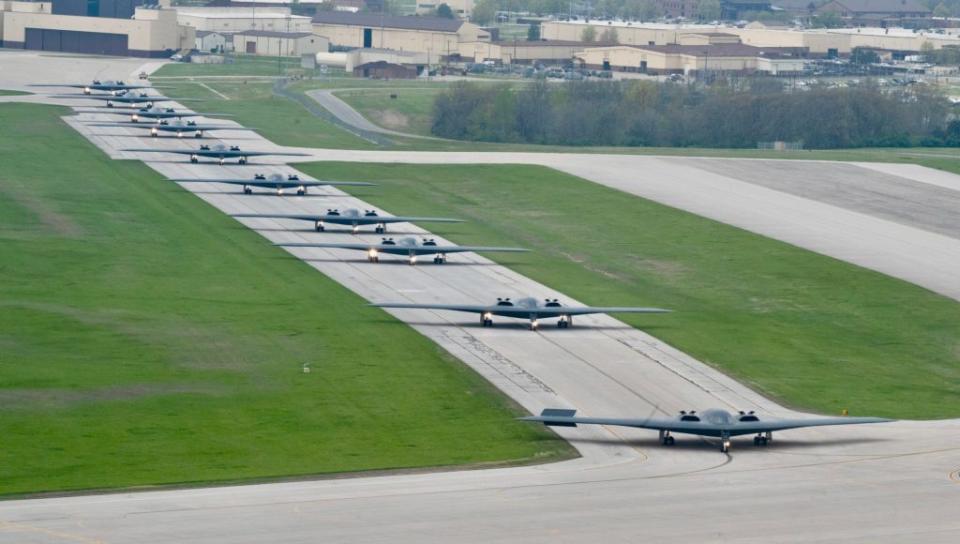
Today’s B-2s are a key element of the aerial leg of America’s nuclear deterrent triad, a mission that was first flown by the B-29.
In stark contrast to the B-2, close to 4,000 B-29s were eventually completed, with one of them being serial number 44-69972, delivered to the U.S. Army Air Forces in March 1945 and now known as Doc. The following August, a pair of B-29s were used to drop two atomic bombs on Japan, introducing the era of nuclear warfighting.
Those nuclear raids were flown by the 509th Composite Group, which had been established with that specific mission in mind.
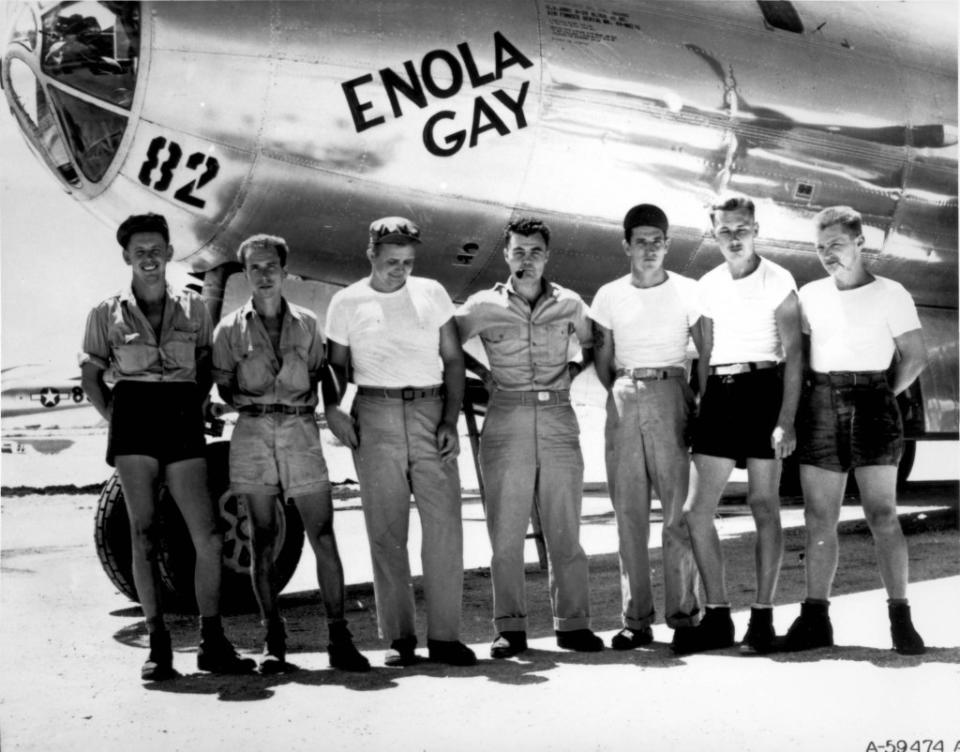
After Japan’s surrender, the 509th returned to the United States and soon found itself at the heart of the newly created Strategic Air Command.
The successor to the 509th Composite Group of World War II fame is today’s 509th Bomb Wing, which has outlived the U.S. Army Air Forces and Strategic Air Command, and which welcomed the first operational B-2, named The Spirit of Missouri, at Whiteman on December 17, 1993. This date marked the 90th anniversary of the first powered flight by the Wright Brothers, and the 49th anniversary of the original activation of the 509th Composite Group.
In the meantime, Doc had been withdrawn from service in the mid-1950s, after periods spent on second-line radar calibration and target-towing duties and, as of 1987, was lying forlorn as a target for bombing training at China Lake, California.
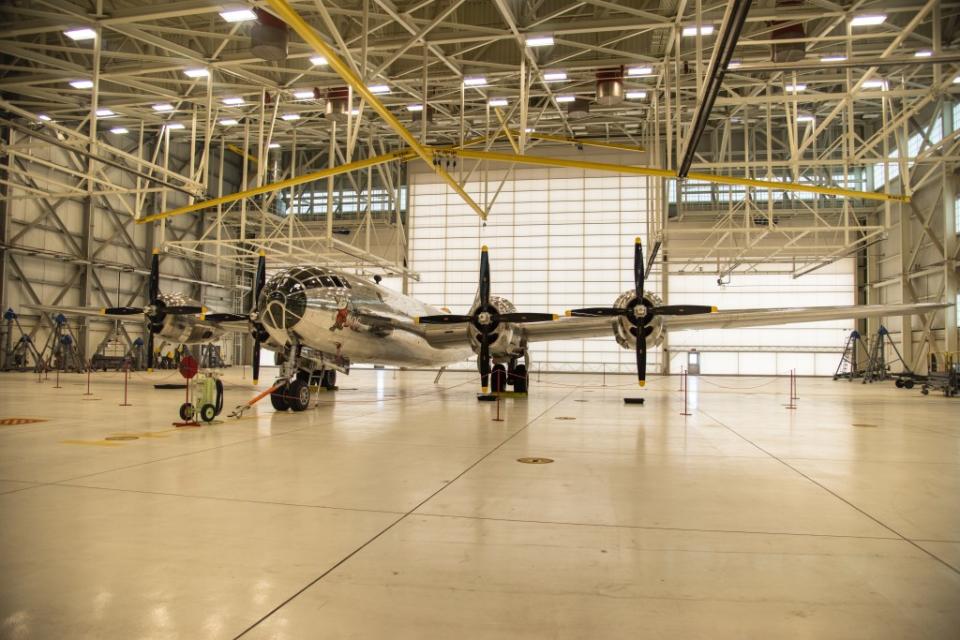
After a 12-year process of acquiring the aircraft from the U.S. government, a long period of restoration work by volunteers at Wichita, Kansas — where many B-29s had once been built — eventually led to Doc returning to the air on July 17, 2016, an event documented in the video below.
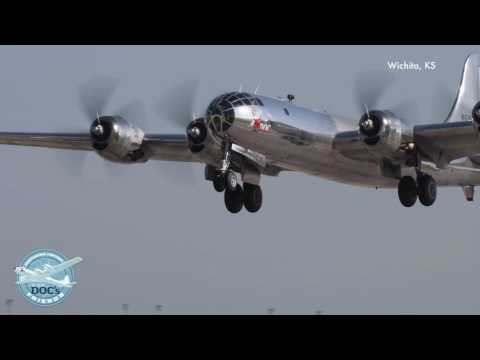
Wings Over Whiteman therefore provided a unique and very interesting comparison of America’s first and most recent operational nuclear bomber.
In terms of dimensions, the B-2’s bat wing spans 172 feet, while the fuselage is 69 feet long, and the overall height is 17 feet with the wheels down. The B-29, meanwhile, has a wingspan of 141 feet 3 inches, a length of 99 feet, and towers over the stealth bomber with a height of 27 feet 9 inches.
Powered by four General Electric F118-GE-100 engines each of which produces 17,300 pounds of thrust, the B-2 can reach high subsonic speeds and an altitude of 50,000 feet. According to the Air Force factsheet on the type, the B-2 can lift a payload of 40,000 pounds, with a maximum takeoff weight of 336,500 pounds; in fact, its payload is considerably greater than that, including, for instance, a pair of the enormous Massive Ordnance Penetrator bunker buster, or MOP bombs, at 30,000 pounds each. The Spirit has an unrefueled range of at least 6,000 nautical miles, according to the Air Force.
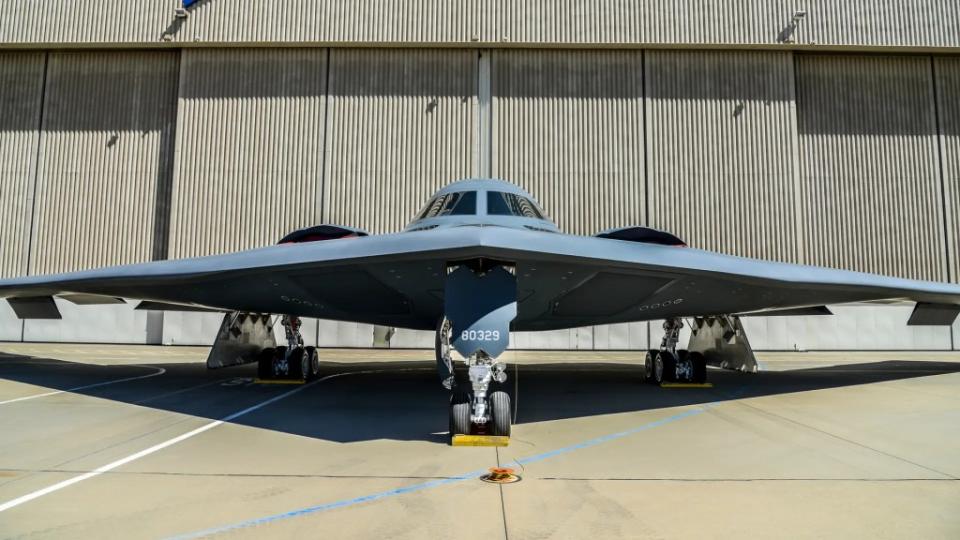
The B-29 is driven by four Wright R-3350s radial engines, each of which produces 2,200 horsepower, for a maximum speed of 357 miles per hour, and a ceiling of 33,600 feet. The aircraft’s maximum takeoff weight of 133,500 pounds includes a payload of 40,000 pounds — half that of the stealth bomber. The Superfortress has a range of around 3,445 nautical miles.
For their times, both the B-29 and B-2 introduced some remarkable and influential innovations.
The B-29 featured pressurized crew compartments as well as a central fire-control system with remotely controlled gun turrets — typical defensive armament comprised 10 50-caliber machine guns and a single 20mm cannon.
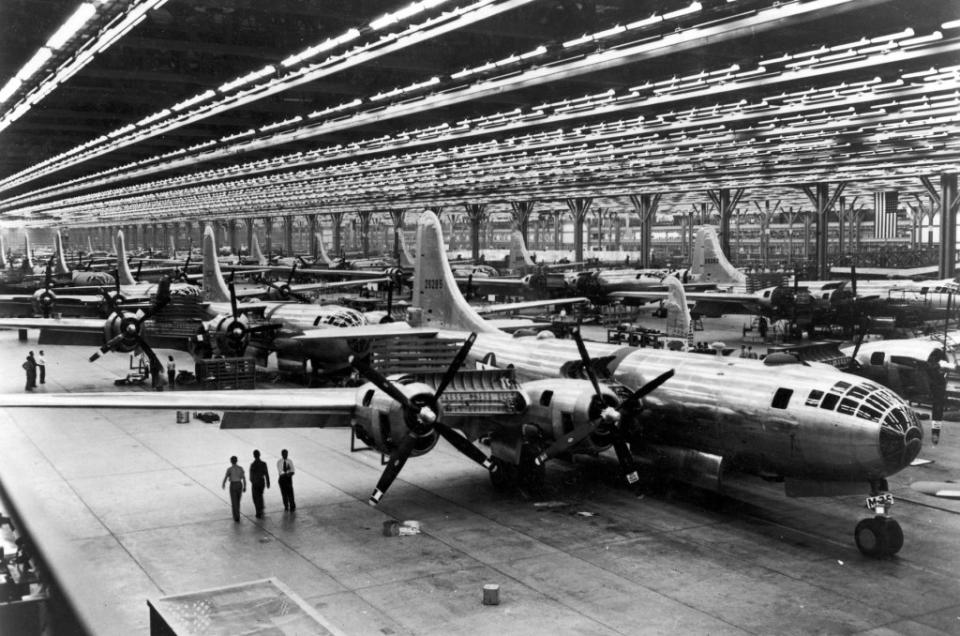
Flying with no defensive armament, the B-2 heralded a new era of stealth for the Air Force, with its entire design intended to provide the low-observable characteristics required to evade high-end air defenses and strike the best-protected targets. The B-2’s stealth features extend to reduction measures for its infrared, acoustic, electromagnetic, and radar signatures, including the extensive use of composite materials, special coatings, and the iconic flying-wing design.
Both B-29 and B-2 excel, in particular, in terms of their high aerodynamic efficiency and large payloads.
Next to the B-29, the B-2 may still look like it’s arrived from the future, but it’s worth noting that the aircraft’s successor is now very much looming on the horizon, scheduled to send the Spirit the way of the Superfortress, into well-earned retirement, sometime in the late 2020s or early 2030s. The first pre-production B-21 Raider made its maiden flight in November 2023 and is now undergoing initial flight testing.
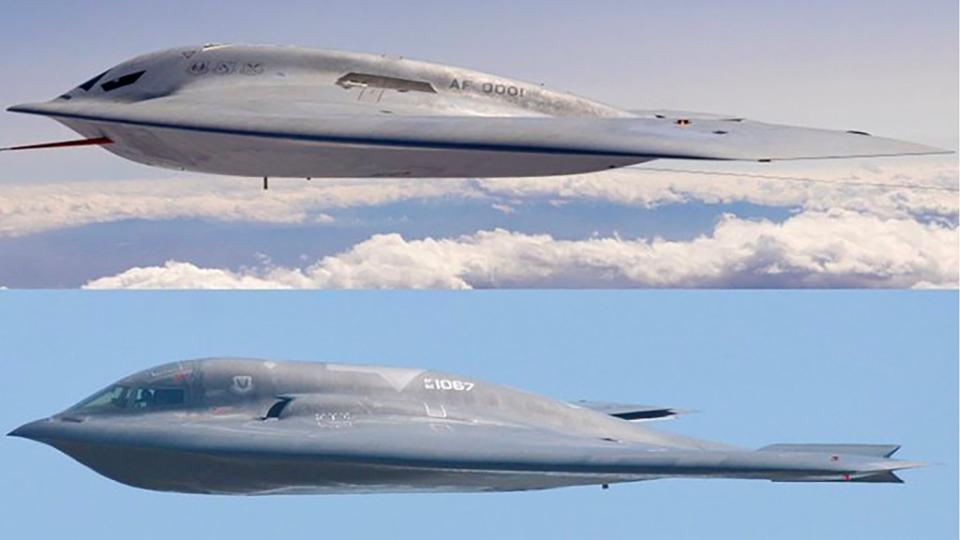
USAF/@thenewarea51
In the meantime, however, the B-2 fleet still has years of service life left ahead of it and the remaining bombers are still set to receive upgrades and additional capabilities before they are retired for good.
Therefore, there’s still more time for formation flights involving the B-2 and the B-29, which not only acknowledge the illustrious heritage of the 509th Bomb Wing and its antecedents and parent organizations but provide a fascinating chance to compare two classic bomber designs that truly represented the technological cutting edge of their respective eras.
Contact the author: thomas@thewarzone.com

